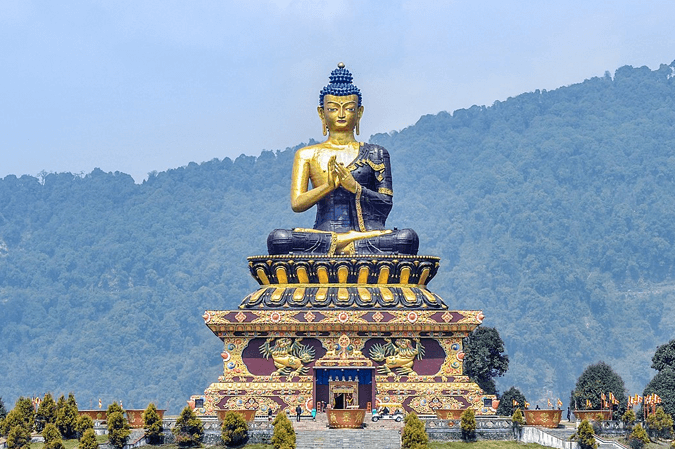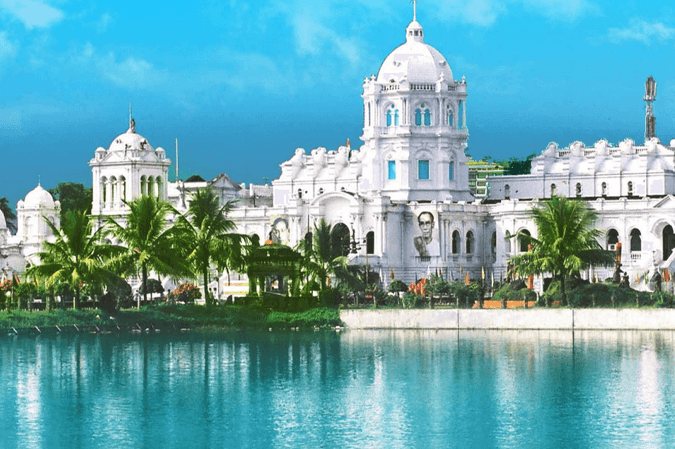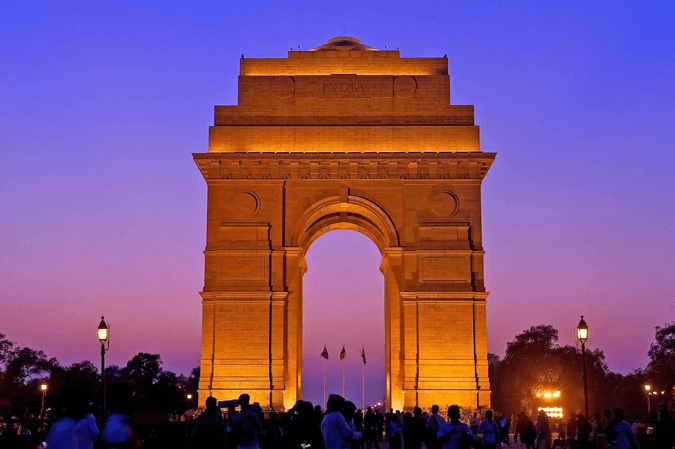Sikkim is a small state in northeastern India, known for its stunning landscapes, rich cultural heritage, and peaceful ambiance. Nestled in the Himalayas, Sikkim is bordered by Tibet to the north and northeast, Bhutan to the east, Nepal to the west, and the Indian state of West Bengal to the south. Despite being the least populous and the second smallest state in India, Sikkim is renowned for its biodiversity, pleasant climate, and cultural diversity.
1. History
- Ancient and Medieval Period: Sikkim’s history is rooted in its tribal origins, with the Lepchas being the earliest inhabitants of the region. The state’s history is also intertwined with the mythology and legends of Tibetan Buddhism. The Namgyal dynasty established Sikkim as a kingdom in 1642, with Phuntsog Namgyal as its first Chogyal (king). The kingdom maintained close ties with Tibet and Bhutan, and Buddhism became a central part of its cultural and religious identity.
- Colonial Period: Sikkim came under British suzerainty in the mid-19th century after a series of conflicts with Nepal and Bhutan. The British used Sikkim as a buffer state between their Indian territories and the expanding Chinese influence in Tibet. During this period, Sikkim enjoyed a degree of autonomy while being under British protection.
- Post-Independence: After India gained independence in 1947, Sikkim remained a protectorate with special status, and in 1975, following a referendum, Sikkim became the 22nd state of India, marking the end of the Chogyal monarchy.
2. Landscape and Area
- Area: Sikkim is the second smallest state in India, covering an area of about 7,096 square kilometers.
- Landscape: The state’s landscape is predominantly mountainous, characterized by the towering peaks of the eastern Himalayas, including Mount Kanchenjunga, the third highest peak in the world and the highest in India. Sikkim features a diverse range of landscapes, from alpine meadows and glaciers to lush subtropical forests and cascading rivers. The state is also known for its numerous lakes and hot springs.
3. Climatic Conditions
- Climate: Sikkim experiences a wide range of climatic conditions, influenced by its altitude:
- Subtropical Climate: The lower regions have a subtropical climate with warm summers and mild winters.
- Temperate Climate: The middle elevations experience a temperate climate, with cool summers and cold winters.
- Alpine Climate: The higher altitudes have an alpine climate, characterized by heavy snowfall and freezing temperatures, especially in winter.
- Rainfall: The state receives heavy rainfall during the monsoon season (June to September), with an average annual rainfall ranging from 1,500 mm to 3,500 mm, depending on the region.
4. Historical Places
- Rumtek Monastery: Located near Gangtok, Rumtek Monastery is one of the most significant and largest monasteries in Sikkim. It serves as the seat of the Karmapa Lama, the third highest lama in Tibetan Buddhism.
- Pemayangtse Monastery: Situated near Pelling, Pemayangtse Monastery is one of the oldest and most important monasteries in Sikkim, belonging to the Nyingma sect of Tibetan Buddhism.
- Tashiding Monastery: A sacred site located in West Sikkim, Tashiding Monastery is revered as a place of spiritual significance and attracts pilgrims from across the region.
- Rabdentse Ruins: The ruins of Rabdentse, the second capital of the former Kingdom of Sikkim, are located near Pelling and offer insights into the state’s historical past.
- Namgyal Institute of Tibetology: Located in Gangtok, this institute is dedicated to the study and preservation of Tibetan culture, art, and history, housing a vast collection of artifacts, manuscripts, and relics.
5. Festivals
- Losar: The Tibetan New Year, Losar is celebrated with great enthusiasm in Sikkim, especially among the Buddhist community. It marks the beginning of the new year in the Tibetan lunar calendar.
- Saga Dawa: A significant Buddhist festival, Saga Dawa commemorates the birth, enlightenment, and death of Lord Buddha. It is observed with prayers, processions, and offerings.
- Dasain (Durga Puja) and Tihar (Diwali): These Hindu festivals are widely celebrated across Sikkim, reflecting the state’s diverse cultural fabric.
- Pang Lhabsol: Unique to Sikkim, Pang Lhabsol is a festival that commemorates the consecration of Mount Kanchenjunga as the guardian deity of Sikkim and celebrates the harmony among different communities.
- Bumchu: Held at the Tashiding Monastery, Bumchu is a unique festival where the sacred pot containing holy water is opened to predict the future and fortunes of Sikkim.
6. Environment and Society
- Biodiversity: Sikkim is renowned for its rich biodiversity, with over 5,000 species of flowering plants, 515 rare orchids, 60 primula species, 36 rhododendron species, and 11 oak species. The state is home to several national parks and wildlife sanctuaries, including the Khangchendzonga National Park, a UNESCO World Heritage Site.
- Tribal Culture: Sikkim has a diverse cultural tapestry, with the Lepchas, Bhutias, and Nepalese being the major communities. The state is known for its peaceful coexistence of different ethnic groups and their rich cultural traditions, including dances, music, and folklore.
- Economy: The economy of Sikkim is primarily agrarian, with agriculture and horticulture being the mainstays. Cardamom, ginger, oranges, and tea are some of the major cash crops grown in the state. Tourism also plays a vital role in the state’s economy, attracting visitors with its natural beauty, cultural heritage, and adventure opportunities.
7. Interesting and Hidden Facts
- Organic State: Sikkim is the first fully organic state in India, having achieved this status in 2016. The state has completely banned the use of chemical fertilizers and pesticides, promoting sustainable and eco-friendly agricultural practices.
- Home to the Third Highest Peak: Mount Kanchenjunga, the third highest peak in the world, is located in Sikkim. The peak holds significant cultural and spiritual importance for the people of Sikkim.
- High Literacy Rate: Sikkim has one of the highest literacy rates in India, with a focus on quality education and educational infrastructure.
- Butterfly Paradise: The state is known for its rich diversity of butterflies, with over 650 species recorded, making it a paradise for butterfly enthusiasts and researchers.
- Trekking and Adventure Hub: Sikkim is a popular destination for trekking and adventure sports, offering a range of trekking routes and activities such as river rafting, mountain biking, and paragliding.



